History of Ham Lake, Minnesota
Note: Most of the following was taken from Anoka County Minnesota, a book published by the Anoka County Historical Society (1982) that is a collection of historical sketches and family histories compiled by members and friends of the Anoka County Historical Society (Library of Congress Catalog Card No. 80-51764).
The earliest record of settlers in the area goes back to 1855 when several men lived in the southern portion. They were mainly hunters.
In 1856 a group started a town just south and west of Ham Lake. They platted and sold lots for a town they named “Glen Carey,” a Scottish name meaning “Beautiful Valley.” Seven or eight homes were built. The place was widely advertised as a future city. Elegantly engraved lithographs proclaiming the names of streets and numbers of blocks were circulated in the cities, while titles to lots were offered for sale and found some purchasers. A bill to move the county seat to Glen Carey was placed in the legislative hopper but was killed by a timely opposition of a delegation of citizens from Anoka. In 1857 the houses were destroyed by a prairie fire. Some of the inhabitants barely escaped with their lives, saving only a very few household goods. They soon left the area as they had nowhere to live.
Another attempted settlement was made in 1856 when a Mr. Spence claimed the southern portion. During Mr. Spence's temporary absence, the settlement was “jumped” by two brothers named Lampert, who fenced 160 acres but moved away shortly after.
Josiah Hart, a native of Vermont, settled in Section 6 in 1857. He was the first settler who remained any length of time as he lived on his homestead until his death in 1876.
John Scully, a native of Ireland, settled in Section 31 in 1858. Also about that time, a Mr. Conley settled nearby.
There was no more settlement until 1866 when Mads Gilbertson, a native of Norway, settled in Section 20, being the first of his nationality in this area. He was soon followed by other Scandinavians. The first recorded birth of a child of European descent in this area was that of Maxel Titterud in 1869. His parents were adamant that he was to be baptized, so they took a wagon pulled by oxen all the way to Minneapolis. The round trip to Minneapolis took one week. On the way home, they met a terrible squall and Maxel’s father (Halvor) tipped the wagon over and sheltered his wife and Maxel. Later the oxen ran off and planted themselves in Rice Creek. Halvor stayed with the animals and his wife walked with the baby, Maxel, fifteen miles to get home.
Ham Lake was a part of Grow Township, but it was detached and separately organized by the Anoka County Commissioners on February 21, 1871. The Scandinavian settlers found it difficult to pronounce the Scottish name of Glen Carey. Since no name had been chosen by the people, the commissioners named it “Ham Lake Township,” after the lake which had acquired that name due to its shape.
The first election was held on March 11, 1871. The town meetings were first held in the warehouse at Lake Netta and later at Fair Oaks Community Hall.
Life was harsh with fierce blizzards, severe droughts, and dust storms. There was a bad grasshopper plague from 1873 to 1877. During these years, the closest place to buy necessities was in Anoka. Some of these early settlers walked the 15+ miles, one way, to buy supplies and then had to carry them home again. Also, sickness took its toll. Whooping cough and diphtheria took the lives of many young children, with 1884 being the worst year of all. The Olaf Moore family lost four children in a month, and the Charley Peterson family lost four children in a week.
Religious meetings were held for several years by the Norwegian and Swedish pioneer families in private dwellings. Due to language differences, each group decided to build their own church in the mid-1870s. (It is rumored that the issue was settled when someone said, “I tink ve should speak da language Yesus spoke as he valked dis earth and dat vas Norwegian.”) Out of the original five pioneer congregations in the township, only one, Glen Cary, remains today. (Note: The Swedish Evangelical Lutheran Church, founded in 1872, is still standing in the City and is on the National Register of Historic Places. It is a part of the history of Our Saviours Lutheran Church, which is now located in the City of East Bethel.)
The early settlers found the soil well-suited to farming as it wasn’t as rocky as they had been accustomed to in Norway and Sweden. In 1880, the US Census listed the population as 253. The agricultural statistics of 1880 show that 677 acres were under cultivation with the township products to be: wheat, oats, corn, beans, sugar cane, hay, apples, tobacco, wool, and butter. Through the years, dairying became an important industry. The pioneer farmers soon found the soil well-suited to growing potatoes, and this became an important commodity both for cash sales and trading for many years.
In 1894 when the population was over 400 people, a group of farmers joined together to form a co-operative and built a creamery on the east side of Lake Netta. (No one seems to know how the lake got its name, but the volume titled History of the Upper Mississippi Valley published in 1881 refers to it as “Lake Nattie” and describes it as a beautiful lake.) It was a farmers’ cooperative belonging to members of the immediate area, and they voted upon this central location within the northern portion of the Township of Ham Lake. The creamery was built by the farmers themselves. Several general stores were built there shortly after, such as C.M. Norquist and Ryberg in 1900 to supply the needs of local farm families. Oscar Hallberg also operated a general store on the corner of what is now Lake Netta Drive and Crosstown Blvd.
In the 1870s and early 1880s, the mailing address for Ham Lake was Anoka, Minnesota. No mail was delivered, but it could be picked up in Anoka. Ole Jesperson came to the United States from Sweden in 1867 and to Ham Lake in 1874, becoming a very good neighbor. When he and his family went to Anoka, he picked up the mail for friends and neighbors, and then they would come to his house and get it. Pretty soon, they were asking him to pick up groceries. This grew to involve more neighbors until the Jespersons put up a small store and post office and the mailing address became Jesperson, Minnesota, which it remained for several years.
Schools
Each school building was assigned a “district” number, and each had its own School Board. All of the one-room schoolhouses were consolidated into Anoka Hennepin District 11 in 1961. Two of the schools were actually located outside of what is now the City of Ham Lake, but children living in the Township of Ham Lake attended them, so they have been included.
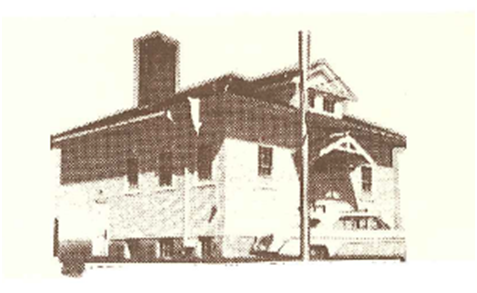
Soderville – District 42
Built in the 1890s, replaced in 1941-42
Last Teacher in 1961: Inez Skager
Located on Co. Rd. 18, East of Hwy 65
The original schoolhouse was replaced by this one in 1941-1942, built by the WPA. The new school included a library where books were placed on the shelves with some “unheard of” system called the Dewey Decimal System. Parents took turns bringing commodities from Anoka, so “hot lunch” was served. Favorite games were “Last Couple Out,” “Drop the Handkerchief,” “Anti-Over,” and “Jacks.” In 1941 the teachers taught the students how to make and use bandages. In May of 1942, it became the registration place for sugar rationing. The building still stands and is now a residential four-plex.

Glen Cary – District 37
Built in 1889
Last teacher in 1960: Helen Weatherly
Located on the site of the present-day City Hall.
At Glen Cary, around 1898, the classes were taught in Norwegian. The Glen Cary School was located on the site of the current Ham Lake City Hall. After the schools were consolidated, it became the meeting place for the township meetings and then for city meetings. It had extensive remodeling in 1976 with a large addition. It was demolished in 1990 at the time that a new City Hall was constructed.
No photo available.
This school was originally located near 171st and Lexington. It is currently located near Carlos Avery Game Farm.
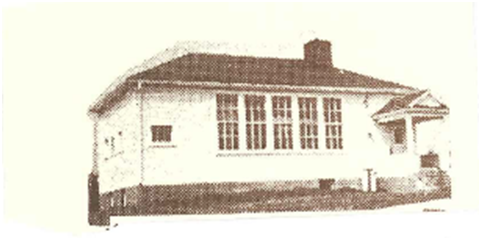
Lake Netta – District 24
Built approximately 1877
Last teacher in 1961: Marie Hallberg
Located on East Lake Netta Drive today.
Lake Netta was organized in 1871 and the classes were first held in farmers’ homes until the first school was built 6 years later. It was first erected about three miles south of the lake, but in 1889 it was moved with the aid of horses up to Lake Netta. In 1935 a new school was erected and the structure remains as a residential dwelling today.
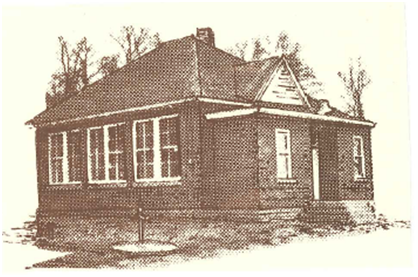
Red Brick (Ole Moore) – District 54
Built in 1884
Last teacher in 1961: Lillian Young
Located: NE corner of Radisson Rd. and Bunker Lake Blvd.
Charlie Moore (whose father, Christ, came to Ham Lake in the late 1880s) remembers hauling bricks from Andover with a team and wagon for the brick schoolhouse which was built in 1914.
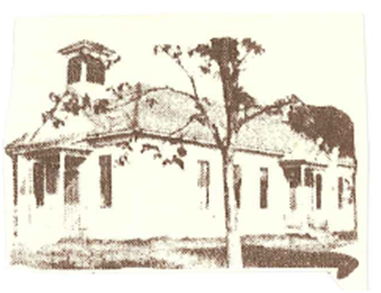
Constance – District 41
Built in 1890
Last teacher in 1961: Ethel Norland
This school was originally located at the intersection of Crosstown Blvd. and Constance Blvd.
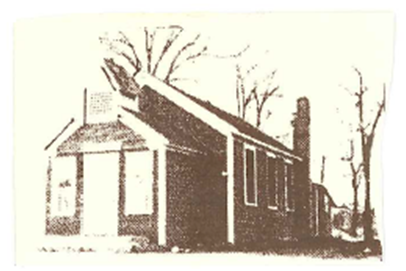
Andover – District 8
Built in 1880
Last teacher in 1954: Irene McAloney
Located: Unknown
This schoolhouse was relocated and now sits at the Anoka County Fairground.
The 20th Century
Telephone service was available at a cost of $6.00 per year beginning in 1903. The telephone switchboard was housed in the neighboring Constance for many years. The telephones were busy party lines with many patrons on each, so calls were made with combinations of rings made by turning the crank handle.
In the early 1900s, Ham Lake also had a baseball team. The ballfield was located near what is now 153rd Avenue NE and Highway 65 (on the current site of Ham Lake Apartments). The team played the neighboring communities of Anoka, Cedar, and Forest Lake. Their means of transportation were horse and buggy. There were no businesses to sponsor them, so each player had to buy their own uniform.
The first Model “T” was brought to Ham Lake by Charlie and Melvin Moore in 1914.
William (Bill) Soderquist, who had been born in Sweden, bought two acres of land and a small house. The house was located near Coon Lake and he towed it on skids during the winter to the location he wanted it. He began a business near the intersection of two dusty country roads (Central Avenue and County Road 18) that were barely more than trails in 1922. Bill was adept at welding and began a business making necessary repairs on machinery for farmers of the area. It was called “Central Garage” because of its central location, halfway between Minneapolis and Cambridge. His brother Gunnar joined him. They even built their own electric plant to produce 32-volt electricity.
In 1924, Central Avenue was widened, graded, and graveled, and with this improvement came an increase in traffic. At this time, another Soderquist brother, Iver, built a grocery and confectionery store on the northeast corner of Central Avenue and County Road 18. One week before it was to open, a tornado destroyed it, and all of Iver’s money was gone. However, he managed to re-build and went into partnership with another brother, Albert, and opened in 1926. They carried a large line of groceries and feed and bought cream and eggs from the farmers. They soon added implements and a few articles of clothing and footwear. They also bought fresh meat, fresh fruits and vegetables, and cow and calf hides from the farmers, who in turn bought their staples and feed from the Soderquist brothers. In the winter, a huge wooden barrel of lutefisk stood outside on the front step to please the great number of Scandinavian customers. Their sister-in-law began making Swedish Potato Sausage in her home for them to sell in the store. Business was so good they began a weekly delivery service. Almost everything was bought on credit, and purchases were itemized in a counter book, one page for each family. They would “settle up” whenever they could, perhaps at the end of the week, month or year. Allowances were then made for the produce, meat, eggs, or dairy product the farmer had brought in.
In the 1920s, three more businesses came: a café/confectionery, a hamburger and root beer stand, and a tavern.
By the 1930s, the community was called “Soderville” in recognition of the founders, the four Soderquist brothers. This name was just used to identify the area around Crosstown Blvd. NE and Highway 65, as the City was never incorporated under that name. It was common to use identifying names for areas along Highway 65, such as Johnsville, Soderville, and Coopers Corner. This name stuck long after the area became a Township and then the City of Ham Lake. In the 1990s, a local TV weatherman forecasted an impending tornado moving towards Blaine, Andover, and Soderville.
A new Central Garage, twice the size of the first, was built in 1932, and gas pumps were installed. Central Garage repaired cars, trucks, and farm machinery; it delivered towing and wrecking service; it sold gas, oil, and automotive accessories; and it issued motor vehicle licenses and sold Chevrolet cars and trucks. The Greyhound Bus started running through Ham Lake in 1929 and Central Garage became the depot. Business was good because Central Garage had the only tow truck and gas pumps between Minneapolis and Cambridge.
State Highway 65 became authorized in 1934 and 1935.
The Rural Electric Association came through in 1938 to make a tremendous improvement as all the buildings and homes were now electrified.
By 1940, State Highway 65 was paved which brought more businesses and more customers.
Around the middle 1940s, a group of teenagers decided to start a baseball team. The team paid for their equipment by collecting scrap iron and selling it. Though their first uniforms had Johnsville on them, as time went on, they eventually became the Soderville Orioles and actually had several businesses who furnished them with uniforms. An excerpt from the Northwest Umpires Review of June 4, 1950, reads, “With Lacktorin in a stingy frame of mind in authoring a no-hitter, Hugo stopped Soderville 3-0 at Soderville last Sunday, despite 3 Hugo errors, only 28 men faced the Hugo hurler. L. Will of the visitors got 2 of the Hugo 5 hits that Carlson gave up and Carlson has been doing some mathematics all week to find out what it takes to win.”
The 1950s
On January 1, 1951, the Community Athletic Association of Soderville, Minnesota was organized and shares sold at $10.00 per share. This money was used to prepare a new field, which is still in use today (Soderville Ballfield is located on Crosstown Blvd., east of Highway 65). In the 1940s and 1950s, the Sunday morning games were the social event of the week. Tickets sold for $.25 - $.50, there was a refreshment stand, and fans cheered. The headlines read, “Soderville Wins State B Title” on the sports page of the September 16, 1951, St. Paul Sunday Pioneer Press.
A Planning and Zoning Commission was established in 1951 to assure orderly growth and development within the City. Building permits were also required for the first time in that same year.
A street and house numbering system was established in the early 1960s to make locating homes easier due to the rapidly increasing population. The City first contracted with an engineering firm, Midland Consultants, in the late 1960s to help plan road construction and subdivision development.
All the schools were closed and consolidated into Anoka Hennepin Independent District #11 in 1961. A large, modern elementary school was built on 14 acres of property donated by the Burton and Chester Livgard families. A dedication was held on March 30, 1965, for the new school named McKinley Elementary.
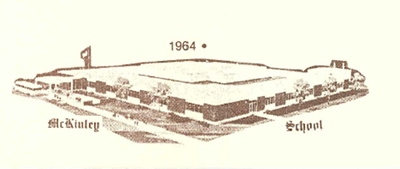
A Fire Department was established in 1969 with Eldon Hentges as the first Fire Chief and volunteers as firefighters. The fire station adjacent to City Hall was also built in 1969.
The Ham Lake Police Department was established on May 17, 1971, by the Township, with William Nelson as its first police chief.
Ham Lake became a city on January 8, 1974.
On February 14, 1974, the City Council adopted Ordinance No. 10A, disbanding the Ham Lake Police Department, following a thorough study that resulted in a decision to contract with the Anoka County Sheriff’s office to provide policing services. Today, the City is still under a contract with the Anoka County Sheriff’s office.
The City’s first comprehensive plan was written in 1975.
The purchase of 68 acres of land, adjacent to the City Hall, established the first large regional park in 1976. That same year, a dedication of a two-story addition to the City Hall took place during the City’s Bicentennial celebration.
The first public library opened with a branch of the Anoka County Library, near Highway 65 and Crosstown Blvd. NE, on March 17, 1978.
Through the 1980s, natural gas became available to more and more neighborhoods, and roads in these same subdivisions were paved. The 1980s also brought the development of the first industrial park.
The 911 emergency phone system was put into place and in 1981 the City worked with all residents to assure correct addresses were being used for police and fire responding to calls for service.
On April 6, 1981, the City Council adopted Ordinance No. 80-48, which approved the City Code of the City of Ham Lake.
The Ham Lake Charter Commission was appointed in March 1982 by the District Court as a result of a petition signed by qualified voters equal in number to 10 percent of those voting at the last election held in the City requesting a Ham Lake City Charter. The charter commissioners prepared a proposed charter and the question was placed on the ballot at the general election on November 2, 1982. The Charter was adopted by a vote of 1,490 for the charter, 924 against the charter, and 399 blank ballots.
The City Council upgraded its comprehensive plan and submitted it to the Metropolitan Council in 1983. Following the approval of the Metropolitan Council, the City Council adopted it on May 7, 1984. The Metropolitan Council stated that they would continue to take every opportunity to encourage the City’s compliance with their recommendation that residential lots should be a minimum of 10 acres in size, as there was no municipal sewer and water available. The City Council disagreed with the Metropolitan Council and continued residential development at a 2.5-acre lot size and later adopted a one-acre minimum lot size based on the ability to provide adequate area to accommodate on-site septic and well systems.
In 1985 the population of the City of Ham Lake was 8,730. The 2010 census showed a population of 15,296.
Since 1985, there has been a large growth in commercial and residential developments and some of the original businesses like Soderquist’s Market are still open. There are still many descendants of the original pioneer families living here.
A new City Code was adopted on June 18, 1990.
The 21st Century
A large addition/remodel was made to the City Hall in 2005-2006.
In 2008 the Comprehensive Plan was again updated. All cities in the seven-county metropolitan area must coordinate their planning with the Metropolitan Council and update their comprehensive plans every ten years. The 2008 Ham Lake Comprehensive Plan had two functions. One was to create policies and plans to implement its own vision for growth. The other was to coordinate with the regional planning needs of the Metropolitan Council and implement specific policies to address regional planning issues. This plan update had a 22-year planning horizon that responded to the regional requirements to plan for growth and development of the Metropolitan Council’s 2030 Regional Development Framework.
All properties are still served by on-site wells and individual septic systems and residential lots are a minimum of one acre, contributing to the feeling of “country living.” The City now has 25 parks (including a second large regional park on Ham Lake), 140 miles of roads, and is still able to maintain the lowest tax capacity rate in Anoka County!
